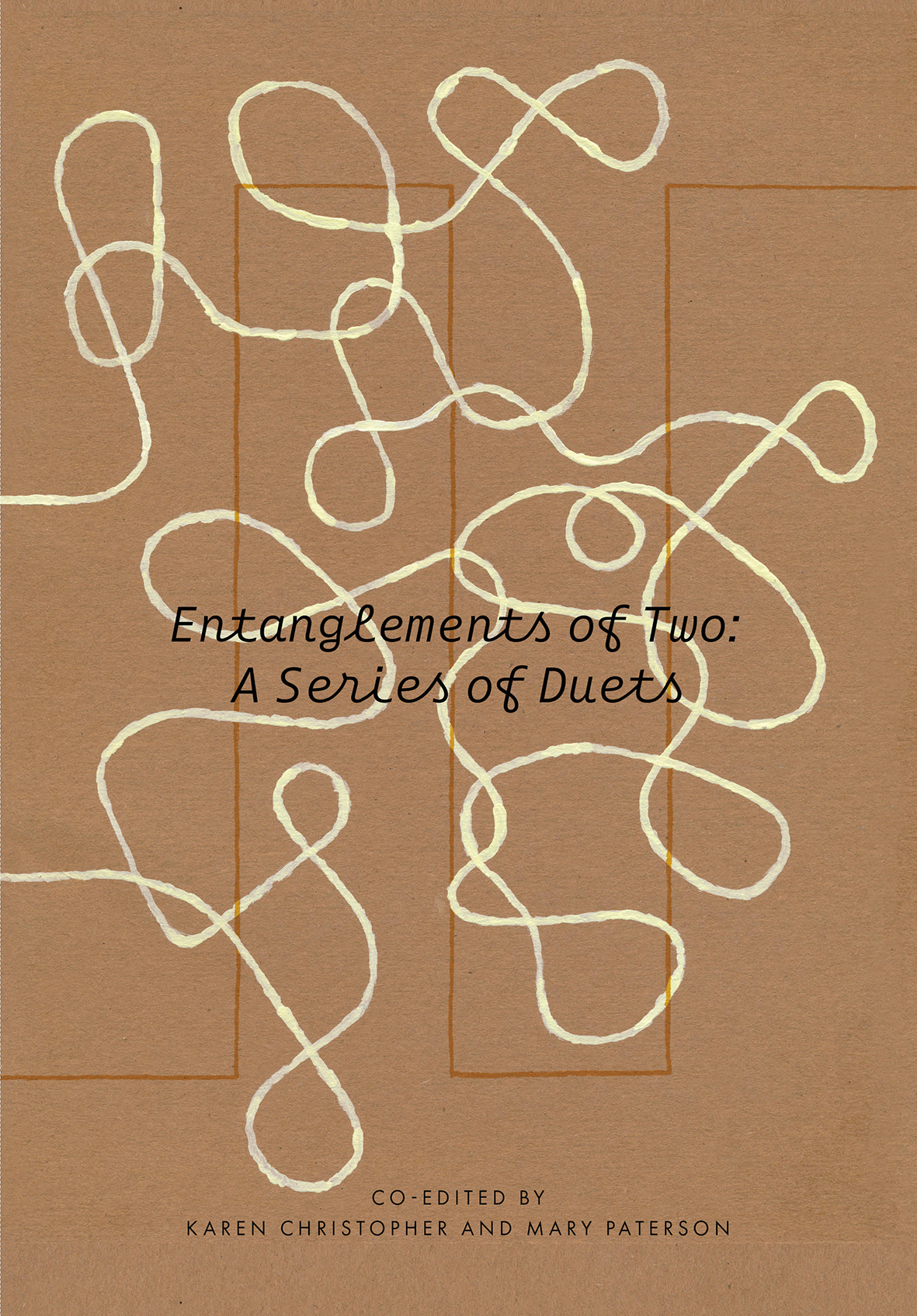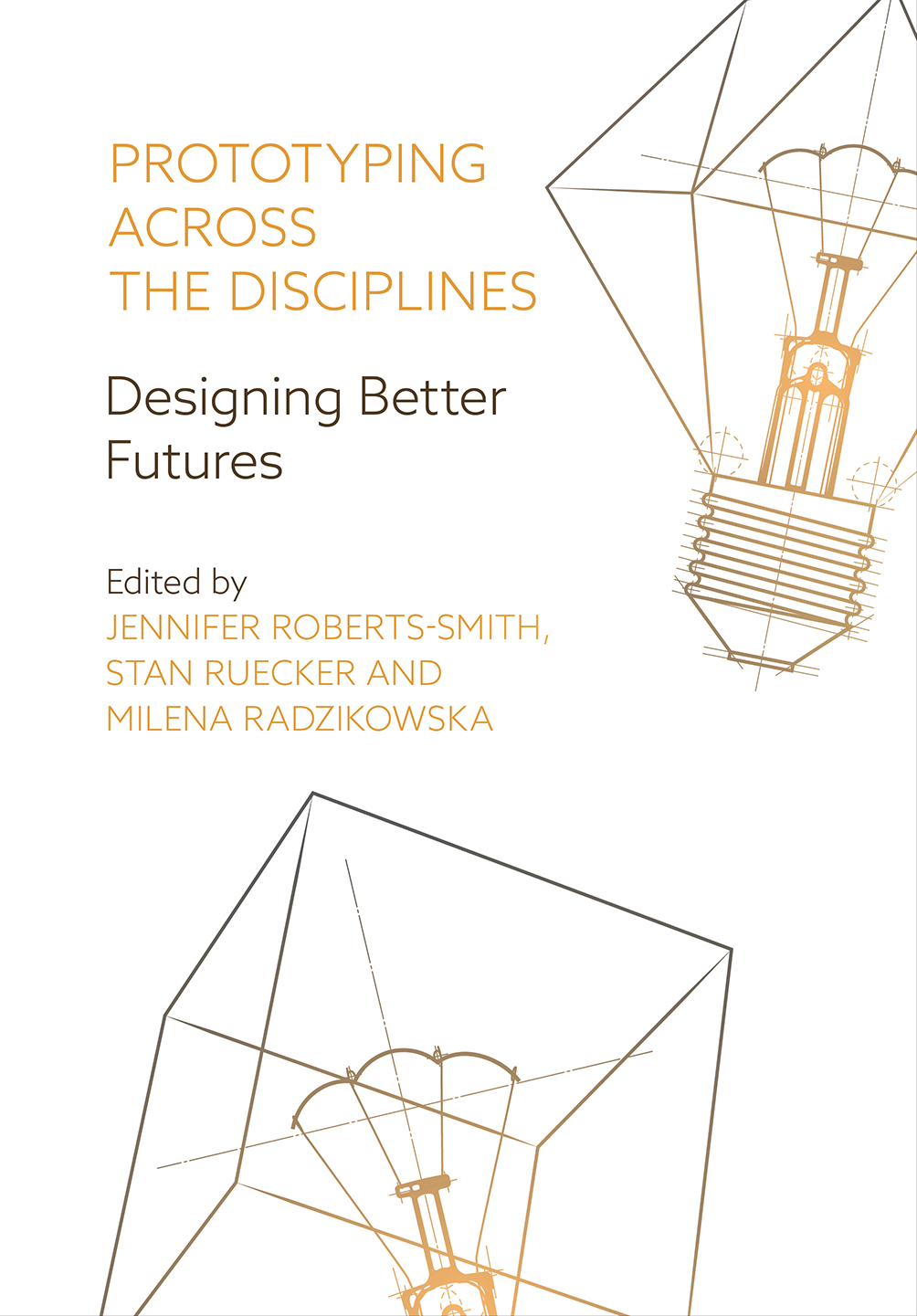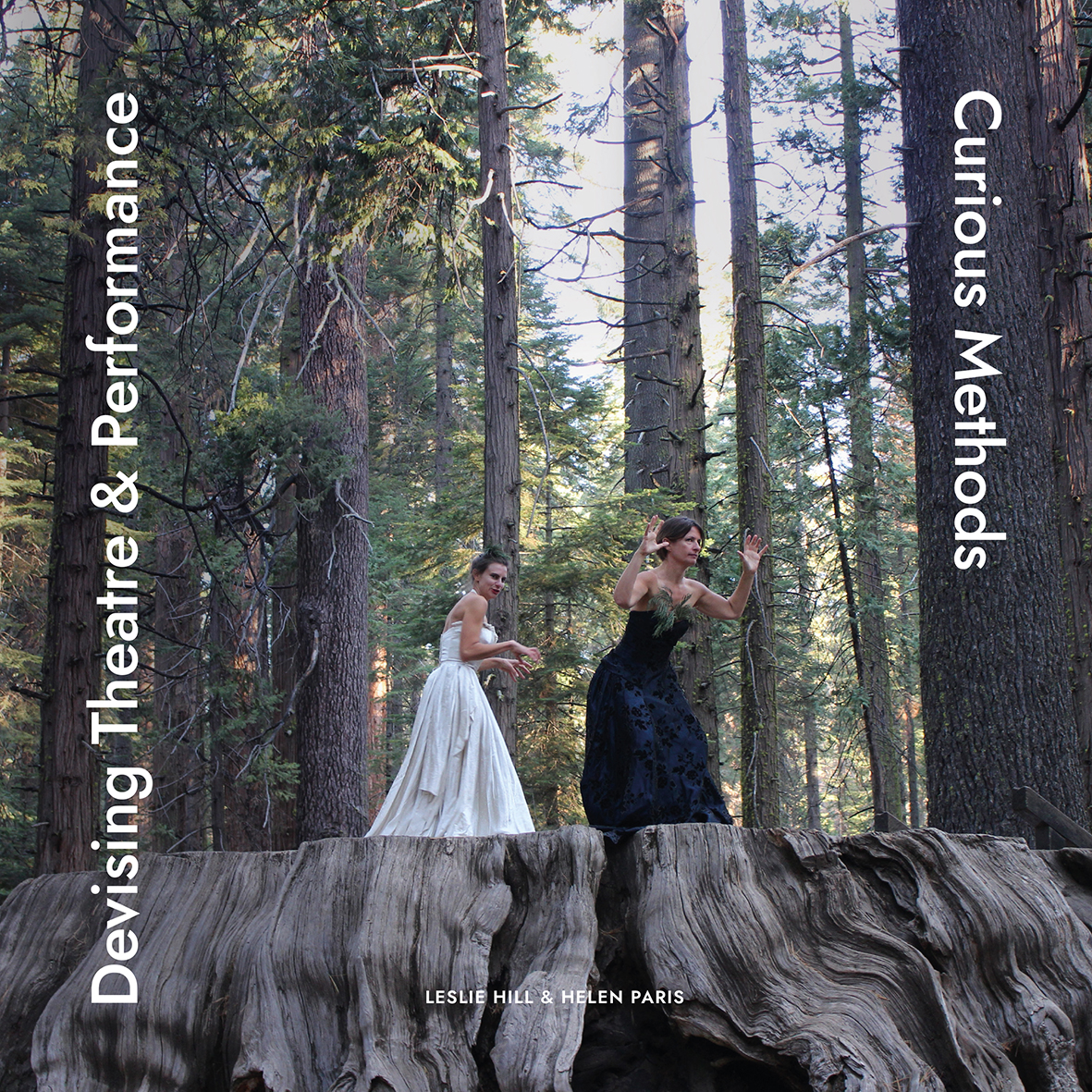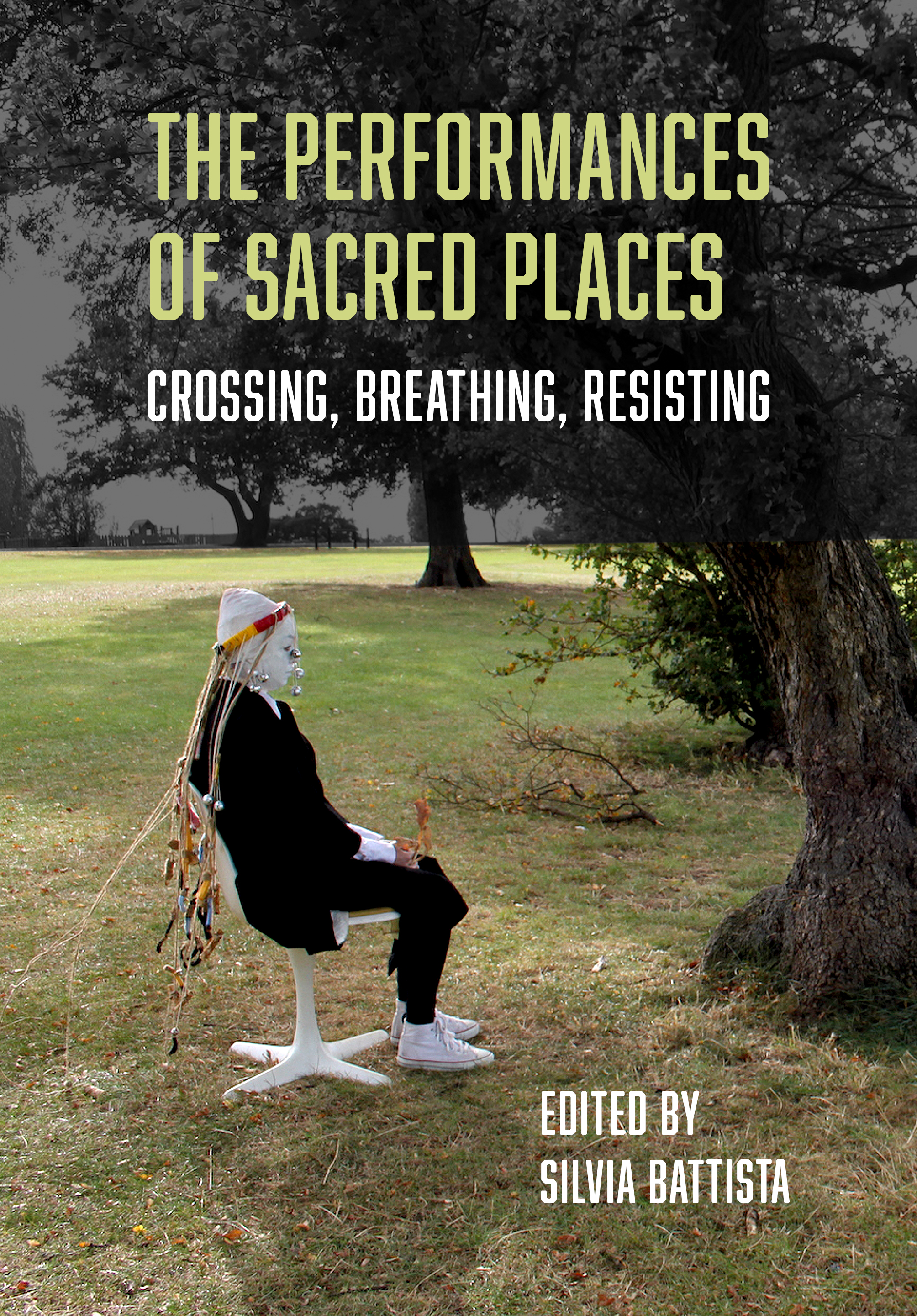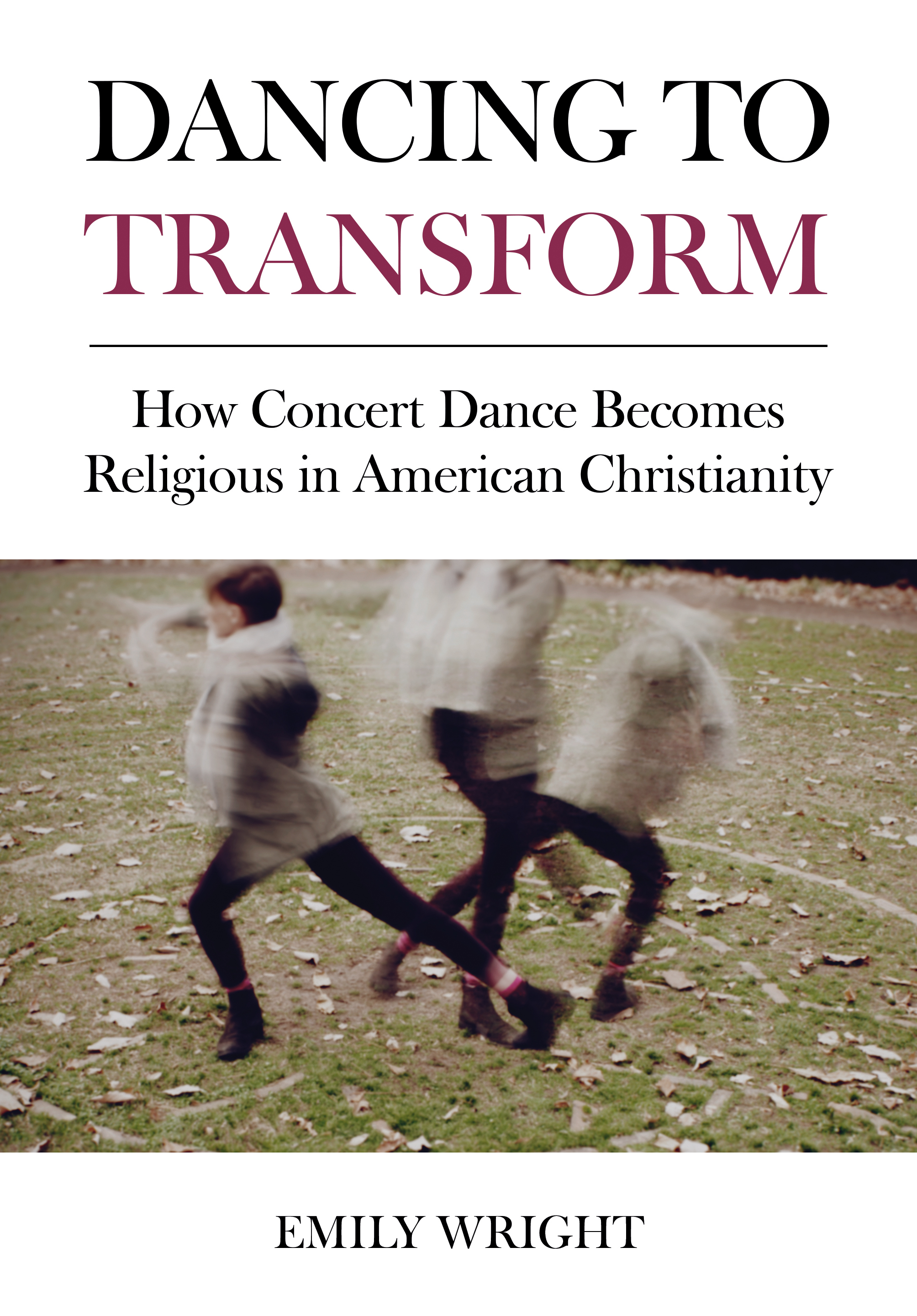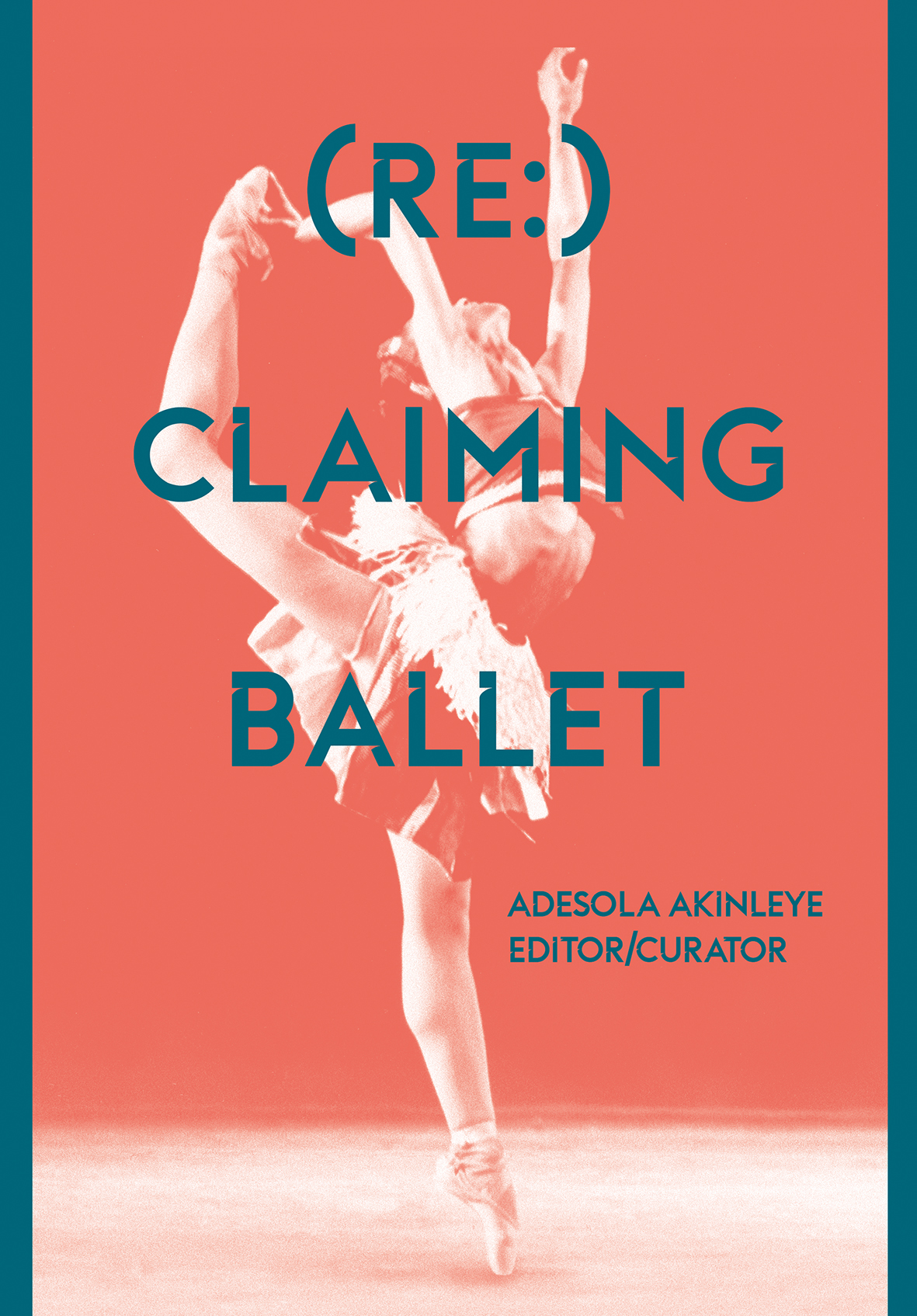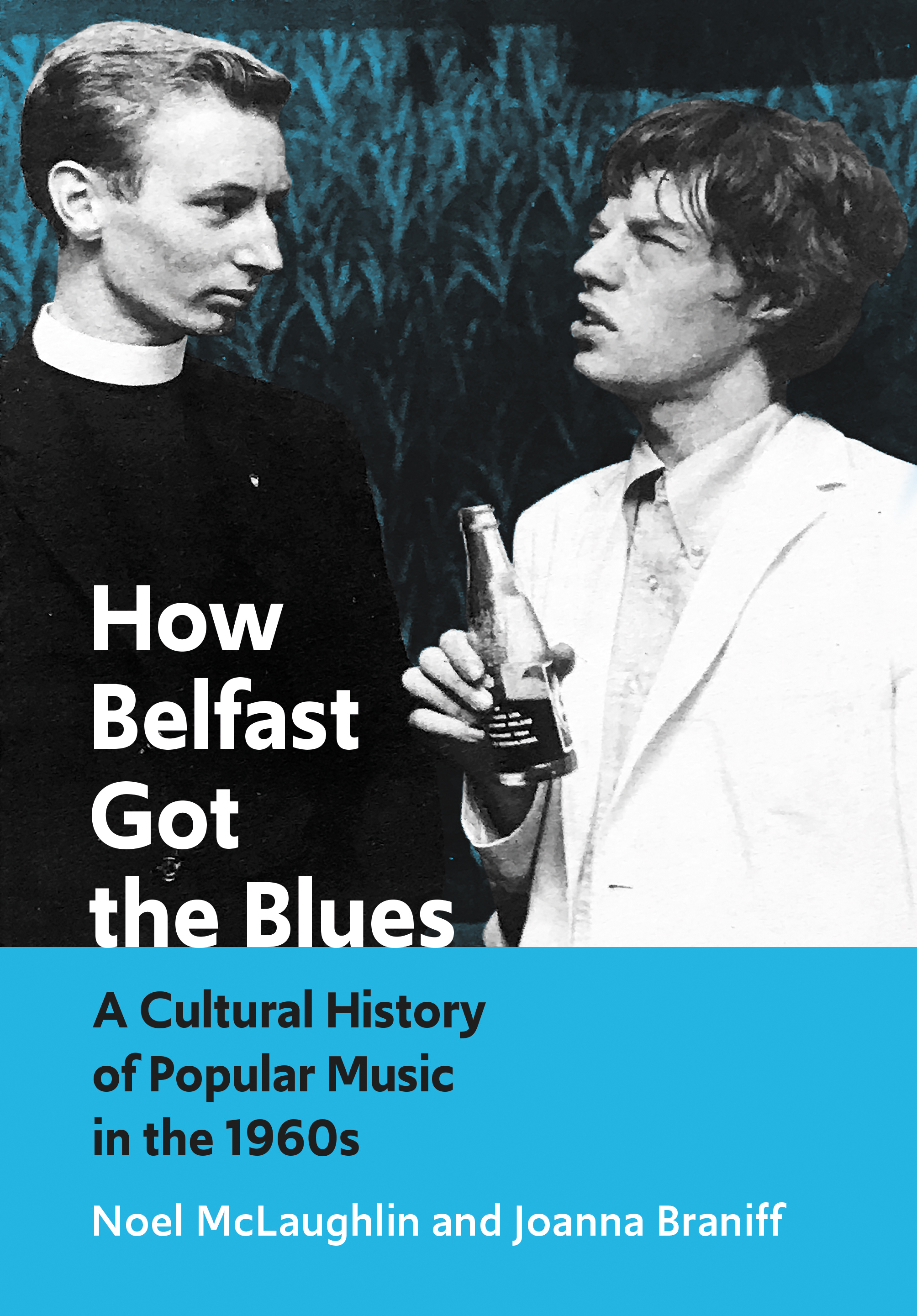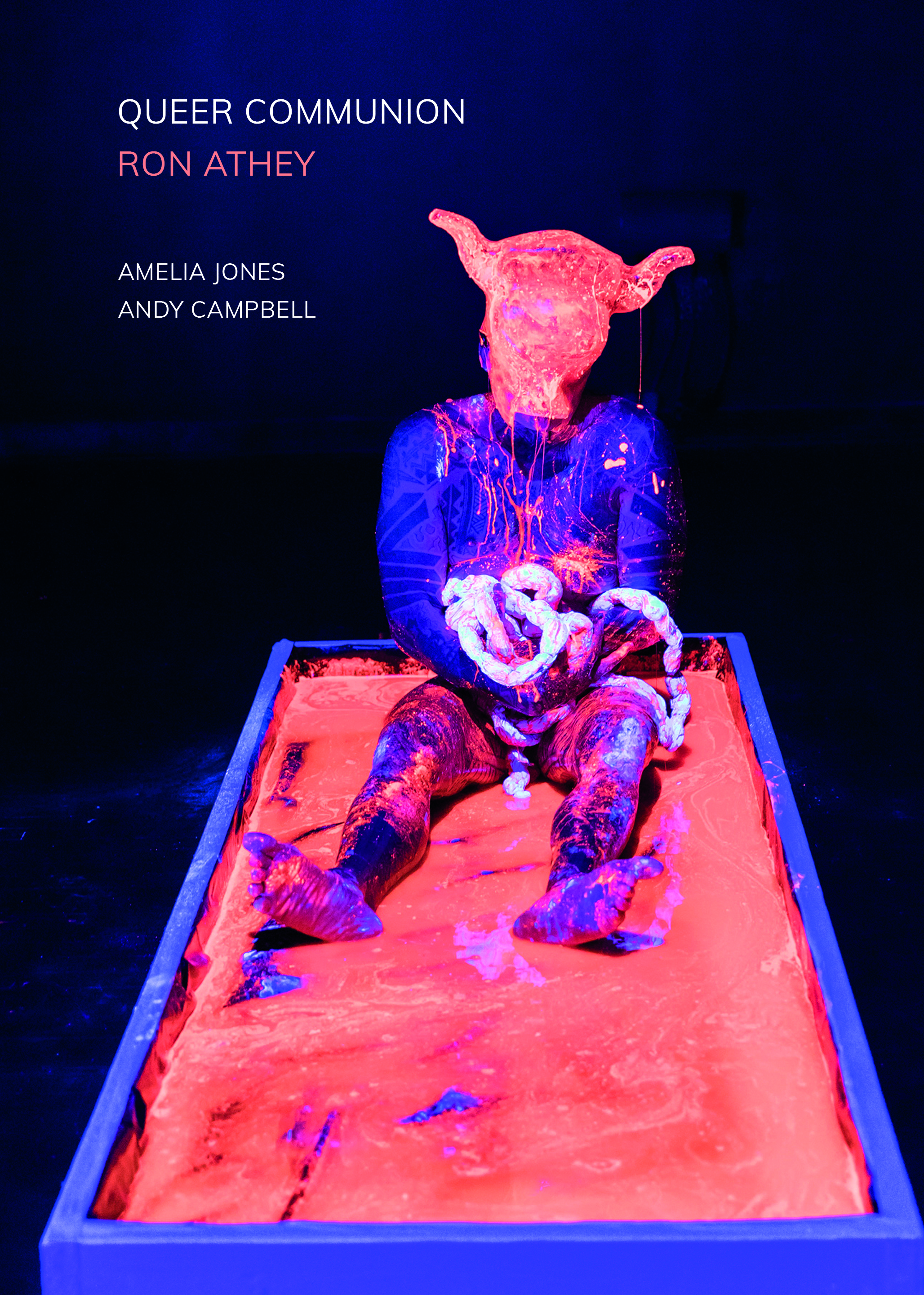- Home
- Collections
- Performing Arts
Performing Arts
Enquire about this collection
Collection Contents
1 - 20 of 158 results
-
-
Entanglements of Two: A Series of Duets
More LessDrawing out the particularities of working in twos, with a focus on collaborative performance making, this book considers the duet as a particular configuration in which to think, the duo a microcosm of humankind, and presents everyday entanglement of form and practice seen through the lens of the smallest multiple unit.
This book explores the practical, philosophical and aesthetic implications of performers working in pairs. It focuses on a ten-year period in the work of Karen Christopher, alongside wider reflections on the duet as a concept in artistic and social life. The book presents an investigation of the entanglement of form and practice seen through the lens of the smallest multiple unit of collaboration: the pair.
During this ten-year period, Christopher set out to create a series of duets by working with one other artist. The 25 pieces in the collection includes reflections from an international group of collaborators, artists, linguists, physicists, theologians, philosophers and performance scholars. Many of them deal with the question of artistic collaboration and entanglement, contemplating the significance of those terms both on an interpersonal and global level.
This book provides a fascinating insight into the creative working process of a particular artist, whilst providing a blueprint for how collaboration might take place. There are many passages that might provide inspiration for other artists and overall the book makes a moving and heartfelt plea for interpersonal open-ness and mutual investment.
Primary readership will be among international theatre-makers, artists, performance and art scholars, philosophers, teachers, directors, actors, dancers, performance artists and those interested in creative and personal writing about performance, art and art-making. It will be of particular relevance to those with an interest in Karen Christopher, or in the other contributors.
-
-
-
The Impact of Touch in Dance Movement Psychotherapy
More LessBy Katy DymokeThis book explores the therapeutic use of touch, focusing on an in-depth case study of work in an NHS setting with a client with learning disabilities, and situating this within a wide theoretical context. This is a unique and influential study illustrating the impact of touch in dance movement psychotherapy and laying the ground for a theory on the use of touch in Dance Movement Psychotherapy (DMP).
The case study illustrates the impact of touch upon the therapeutic relationship with the use of video transcription and descriptive reflexive accounts of the session content. The case analysis sections establish the ground for a paradigm shift, and for emergent theory and methods in support of the use of touch in Dance Movement Psychotherapy and other contexts. The role touch takes is beyond its affect, which expands our understanding of its potency as an intervention. The writing is embedded in many years of practice-led-research in the field of dance and somatic practices, in particular Body-Mind Centering® and Contact Improvisation, in which touching and being touched is met with curiosity as a place of insight and revelation, beyond the bounds of taboo and social diktat.
The study considers the philosophical landscape of both touch and non-touch. This book explores and reflects upon the use of touch, considering the wider context and socially imposed perceptions that would prevent touch from taking place – including philosophical and social discourses. Through telling the story of a client case, the book offers a wealth of thought-provoking content to inspire continued dialogue.
Key strengths of this book are the depth, warmth and perceptiveness of the case history, and the way in which this is successfully linked with theory. Particular attention is paid to embodied cognition and exosystemic theory, the two leading developments of current thinking.
With the ethical, practical and philosophical content, the book will be of interest to psychotherapists, health and social care practitioners, as well as arts in health practitioners and beneficiaries in educational programs and settings.
Primary readership will be among DMP psychotherapists, body psychotherapists, drama therapists, Body Mind Centering® practitioners, arts in health practitioners, people working with clients with learning disabilities and any practitioner and researcher interested in understanding the role touch may play in the psychotherapeutic encounter.
-
-
-
Prototyping across the Disciplines
More LessIf people from different fields are going to work together on projects, then they need to begin to understand each other. They can be separated by the words they use, the ways they work and how they think. However, in many fields there is common ground, in the attempts to create what is sometimes called inventive knowledge. These fields progress not only by understanding increasingly more about what already exists, but by making guesses about possible better futures. The guesses consist of small forays into that future, using strategies that are variously called learning through making, research through design or, more simply, prototyping.
While traditionally associated primarily with industrial design, and more recently with software development, prototyping is now used as an important tool in areas ranging from materials engineering to landscape architecture to the digital humanities. This book collects current theories and methods of prototyping in a dozen disciplines, illustrating them through case studies of actual projects, whether in industry or the classroom.
This edited collection aims to provide a context, a theoretical framework and a set of methodologies for interdisciplinary collaboration in design. Each chapter offers a different disciplinary perspective on prototyping, providing a case study as a point of comparison for identifying commonalities and divergences in current practices. Contributions are from a group of scholars with worldwide experience of working and presenting in design, and who are currently based in Canada, the United States, Chile and Brazil.
This book isn’t just about design across the disciplines, it is about how prototyping works in different disciplines. Prototyping is a crucial part of the design process, and a practice used by creators from all design disciplines, from architects and engineers, to industrial and service designers, to test a concept or process and evaluate an idea.
Much research has been published on prototyping in design; what makes this new book unique is the cross disciplinary nature, showing designers how they can learn from various approaches to improve their skills. Disciplines discussed include post-human design, theatre, tabletop game design, landscape architecture and arts entrepreneurship.
Primarily of interest to design scholars and practitioners with an interest in integrative design. Undergraduates and graduate students in design, HCI (human-computer interaction) and the digital humanities. Textbook potential.
-
-
-
Devising Theatre and Performance
More LessAuthors: Leslie Hill and Helen ParisDevising Theatre and Performance is a hands-on guide for artists, students and teachers of performance at any stage of their practice. It offers a wide range of creative prompts and pathways enriched with critical thinking tools and questions, a hybrid approach Hill and Paris call ‘Curious Methods’.
This is a welcome addition to the field, created and curated by two experienced artists who have operated at the international interface of academia and professional practice for over three decades.
The collection is packed with fun, creative, thoughtful exercises distilled from over twenty years of running interdisciplinary artist workshops and teaching both devising and performance making. As well providing numerous exercises and suggestions for devising, composing and editing original works, this book offers tools for giving and receiving feedback, critical reflection and framing artistic work within academic research contexts.
Readers can choose to dip in and out, to follow the book as a course or to work section by section, focusing on organizing principles such as working from the body, working with site, working with objects or performance activism. The book includes a detailed production workbook and a practice-based research workbook you can tailor to your own projects. The 'Curious Methods' approach encourages users to take the time and space their practice deserves while offering tools, nourishment and encouragement and inviting them to take risks beyond their comfort zones. The exercises are carefully described so that they can easily be tested out by readers, and are well contextualized in relation to vivid examples from contemporary performance practice and relevant political contexts. This compelling approach goes beyond many other books on theatre devising, which merely provide performance recipes; they do so by repeatedly highlighting the vital cultural relevance and potential personal impact of the experiments that they invite us to undertake.
The primary audience for this important new book will be academics, instructors and students in courses on devised theatre, improvisation, performance art, experimental performance and practice-based research. It will be essential for classroom use, for students of theatre and performance and live art – undergraduate, postgraduate and Ph.D., teachers and all those needing strategies for getting started.
It will also appeal to readers from the broader arts, humanities and social sciences who are seeking resources for integrating creative methods into their research.
-
-
-
The Performances of Sacred Places
More LessThis is the first book to explore the notion of sacred places from the perspective of performance studies and presents both practice-as-research accounts alongside theoretical analysis. It is multidisciplinary, bringing together religious studies, philosophy and anthropological approaches under the umbrella of performance studies. By focusing on practice and performance rather than theology it also expands the notion of sacred places to non-religious contexts.
This new collection offers a multi-layered and contemporary approach to the question of sacred sites, their practices, politics and ecologies. The overarching critical framework of inquiry is performance studies, a multidisciplinary methodological perspective that stresses the importance of investigating the practices and actions through which things are conducted and processes activated. This is an innovative perspective that recognizes the value, function and role that practices and their materialities have in the constitution of special places, their developments in culture, and the politics in place for the conservation of their sense of specialness.
The questions investigated are: what is a sacred place? Is a place inherently sacred or does it become sacred? Is it a paradigm, a real location, an imaginary place, a projected condition, a charged setting, an enhanced perception? What kind of practices and processes allow the emergence of a sacred place in human perception? And what is its function in contemporary societies?
The book is divided into three sections that evidence the three approaches that are generally engaged with and through which sacred places are defined, actualized and activated: Crossing, Breathing and Resisting. There is a strong field of international contributors including practitioners and academics working in the United Kingdom, the United States, Poland and Australia.
Primary interest will be students, academics and practitioners studying or working in theatre and performance studies; fine art; architecture; cultural and visual studies; geography; religious studies; and psychology.
Potential for classroom use, and very strong potential for inclusion on reading lists as a secondary text for undergraduate and postgraduate courses in fine art, live art, performance art, performance and theatre studies.
-
-
-
Arnold Wesker
More LessThis new collection will add significantly to the body of scholarship on this important dramatist. This is the first study of the whole body of Wesker’s work, and will create new interest in this partly forgotten key figure in post-war British theatre.
A new study of Wesker’s work is overdue. The editors are recognized scholars in the field with a track record of publication on British theatre. An impressive list of contributors comprises important scholars of post-war theatre – including John Bull and Chris Megson – alongside practitioners such as Edward Bond and Pamela Howard, who bring professional insights to bear.
Arnold Wesker was hailed in the press as ‘one of the great overlooked’ of British drama when he died in April 2016. Despite his pivotal engagement with the cultural politics of 1960s Britain and his international career, only a fraction of Wesker’s dramatic output tends to be studied. He is still remembered and discussed as the author of The Trilogy, three plays staged between 1958–60 that fail to reflect the daring aesthetics of his later work, thereby perpetuating an incorrect image of a naturalist playwright.
This important new book aims to remedy the recent critical neglect of the dramatist, building on existing scholarship and introducing new insights and perspectives. It examines the whole body of Wesker’s work for the first time, including some of his non-dramatic work, and considers it from a variety of perspectives. These include Wesker’s reception in Europe, his Jewishness and his attitude to politics and to community. Significant use is made of material from the Arnold Wesker archive, held by the Harry Ransom Humanities Research Center at the University of Texas at Austin, USA.
It includes chapters on Wesker’s representation of, and attitude towards, women, his relationship with his Jewish origins and identity, and his role in establishing Centre 42 following his imprisonment for participation in the Aldermaston March in 1959. Centre 42 was initially a touring festival aimed at devolving art and culture from London to the other working class towns of Britain, and arose from Resolution 42 of the 1960 Trades Union Congress, which concerned the importance of arts in the community.
It will be of most interest to academics and scholars of post-war British theatre, and to those teaching theatre and drama. It is accessible for a student readership at all undergraduate levels, as well as postgraduates. It has potential for textbook and reading list use.
Wesker’s significance in British theatre history of the 1950s and 1960s means that the book may find readers amongst the informed general public.
-
-
-
Dancing to Transform
More LessBy Emily WrightIn response to a scarcity of writings on the intersections between dance and Christianity, Dancing to Transform examines the religious lives of American Christians who, despite the historically tenuous place of dance within Christianity, are also professional dancers. Emily Wright details how these dancing Christians transform what they perceive as secular professional by transforming concert dance into different kinds of religious practices in order to express individual and communal religious identities. Through a multi-site, qualitative study of four professional dance companies, Wright explores how religious and artistic commitments, everyday lived experience and varied performance contexts influence and shape the approaches of Christian professional dancers to creating, transforming and performing dance. Subsequently, this book provides readers with a greater awareness and appreciation for the complex interactions between American Christianity and dance. This study, in turn, delivers audiences a richer, more nuanced picture of the complex histories of these Christian, dancing communities and offers more fruitful readings of their choreographic productions.
-
-
-
(Re:) Claiming Ballet
More LessThe collection of essays demonstrates that ballet is not a single White Western dance form but has been shaped by a range of other cultures. In so doing, the authors open a conversation and contribute to the discourse beyond the vantage point of mainstream to look at such issues as homosexuality and race. And to demonstrate that ballet’s denial of the first and exclusion of the second needs rethinking.
This is an important contribution to dance scholarship. The contributors include professional ballet dancers and teachers, choreographers, and dance scholars in the UK, Europe and the USA to give a three dimensional overview of the field of ballet beyond the traditional mainstream.
It sets out to acknowledge the alternative and parallel influences that have shaped the culture of ballet and demonstrates they are alive, kicking and have a rich history. Ballet is complex and encompasses individuals and communities, often invisiblized, but who have contributed to the diaspora of ballet in the twenty-first century. It will initiate conversations and contribute to discourses about the panorama of ballet beyond the narrow vantage point of the mainstream – White, patriarchal, Eurocentric, heterosexual constructs of gender, race and class.
This book is certain to be a much-valued resource within the field of ballet studies, as well as an important contribution to dance scholarship more broadly. It has an original focus and brings together issues more commonly addressed only in journals, where issues of race are frequently discussed.
The primary market will be academic. It will appeal to academics, researchers, scholars and students working and studying in dance, theatre and performance arts and cultural studies. It will also be of interest to dance professionals and practitioners.
Academics and students interested in the intersection of gender, race and dance may also find it interesting.
-
-
-
Performing #MeToo
More LessA tweet by American actor and activist Alyssa Milano, sent on October 15, 2017, opened the floodgates to an outpouring of testimony and witnessing across the Twitterverse that reverberated throughout social media. Facebook status lines quickly began to read “Me too,” and #MeToo was trending. That tweet re-launched the ‘me too’ movement, which was started in 2006 by Tarana Burke.
Performing #MeToo: How Not to Look Away does not attempt to deliver a comprehensive examination of how #MeToo is performed. What it does aim at presenting is a set of perspectives on the events identified as representative of the movement through a lens or lenses that are multinational, as well as work and analysis from a variety of time periods, written in a diversity of styles. By providing this means of engaging with examples of the many interpretations of and responses to the #MeToo movement, and by identifying these responses (and those of audiences) as provocations, of examples of how not to look away, the collected chapters are intended to invite reflection, discussion and, hopefully, incite action.
It gives writers from diverse cultural and environmental contexts an opportunity to speak about this cultural moment in their own voices. There is a wide geographical range and variety of forms of performance addressed in this timely new book. The international group of contributors are based in the UK, USA, Australia, South Africa, Scotland, Canada, India, Italy and South Korea.
The topics addressed by writers include socially engaged practice; celebrity feminism, archive and repertoire; rape/war; misogynistic speech; stage management and intimacy facilitation; key institutions’ responses; spatial practices as well as temporal ones; academic call-outs; caste/class; political contexts; adaptation of classic texts; activist events; bouffon (a clown technique) and audience response
Forms of performance practice include applied theatre, performance protest, verbatim, solo performance, institutional practice, staging of plays, street responses, academic, adaptation of classic text, play reading events and the musical.
Although there is much to read in the media and alternative media on the #MeToo movement, this is the first attempt to analyse the movement from and in such diverse contexts.
Bringing together twelve writers to speak about works they have either performed, witnessed or studied gives the reader a nuanced way of looking at the movement and its impact. It is also an incredible archive of this moment in time that points to its importance.
Suitable for use in several graduate and undergraduate courses, including performance studies, feminist studies, sociology, psychology, anthropology, environmental or liberal studies and social history.
Essential reading for theatre workers, academics, students, and anyone with an interest in feminism, contemporary theatre or human rights. For artists considering projects that include the themes of #MeToo, and for producers and directors of such projects looking for good practices around how to create environments of safety in their organizations, as well as those who wish to organize communities of artists.
For anyone interested in learning more about how to support the movement, or an interest in the specific social narratives told in each individual chapter. For women, feminists and anyone with an interest in the issues.
-
-
-
The Drama Therapy Decision Tree
More LessAuthors: Paige Dickinson and Sally BaileyThis book provides the reader with a thorough understanding of drama therapy methods through the provision of examples so therapists can select the most appropriate methods and apply them themselves. The authors provide a common language for communicating what drama therapists do in terms of diagnoses and interventions, especially for new students in the field.
There has been no systematic method developed for drama therapists and drama therapy students for selecting the most appropriate drama therapy technique or method for clients. Typically, students leave university and have to work out how to plan treatment through trial and error. This book is not intended as an instruction manual, but the authors of this book have identified and analysed how they approached this task themselves, and they explain how the theory learnt at university can be put into practice. Their desire is to give early career drama therapy professionals a reliable and effective tool for making the best clinical decisions they can. This book is not only an educational tool, but also a practitioner’s reference tool for planning how to address the socio-emotional needs of their clients. Readers will find this timely book offers structure to drama therapy teachers and students alike.
It explains the basic tools that drama therapists use in all therapy situations, starting with the therapeutic process, then moves on to identify the core healing concepts that make drama therapy so powerful and unique. The diagnostic systems used by all mental health professionals (DSM-5 and ICD-11) are integrated by relating the core healing concepts and tools to the symptoms of diagnoses. The basic treatment planning process is also discussed. The book then explains how these components are used together systematically through a series of questions (that the therapist asks themself) in order to identify the most appropriate type of intervention for the client. Finally, the book offers several examples of how this system can be applied to a variety of common diagnoses. The appendices provide resources about drama therapy in terms of theory, approach and specific population.
Of primary relevance to teachers and students of drama therapy, and drama therapists and integrative arts therapists in training and early career stages. May be useful for other professionals interested in drama therapy and related creative or therapeutic practices where theatre and drama are used.
Note: in the US context there is a wider range of related practices, which are often regarded as part of drama therapy.
-
-
-
Dance and Authoritarianism
More LessBy Anthony ShayEveryone who viewed the opening ceremonies of the 2008 Beijing Olympic Games can understand the power of dance and mass movement in the service of politics. While examples of such public performances and huge festivals are familiar in Nazi Germany, the former Soviet Union and today's North Korea, this new book addresses the lesser known examples of Spain under Franco, the Dominican Republic, Iran, Croatia and Uzbekistan, all of which have been subjected to various political regimes.
Dance and choreographed mass movement is the newest field of serious research in dance studies, particularly in the fields of politics and international relations and gender and sexuality. The author uses dance as a lens through which to study political, ethnic, and gendered phenomena so that the reader grasps that dance
constitutes an important non-verbal lens for the study of human behaviour.
This is the first study on dance and political science to focus specifically on authoritarian regimes. It is a significant and original contribution to scholarship in the field, with the key studies drawn from a variety of different geographical and historical backgrounds.
In Spain under Franco, the Women's Section of the fascist Falange created a folk dance program that toured widely and through the performance of Spanish regional folk dances performed by virginal young Spanish women, embodying Catholic purity, permitted the regime to re-enter the world of polite diplomacy.
The Dominican Republic dictator, Rafael Trujillo, himself a gifted dancer, raised the popular folk and vernacular dance, the merengue, to the level of the "national" dance, which became a symbol of his regime and Dominican identity, which merengue it still maintains.
For over a thousand years, Croatia, has endured a series of authoritarian regimes – Hapsburg, Napoleon, the Yugoslav royal dictatorship, fascist, Josip Broz Tito's communist regime, Franjo Tudjaman – that ruled that small nation. For over 70 years, Lado, the National Folk Dance Ensemble of Croatia, has served as "the light of Croatian identity." Through its public performances of folk dances and music, Lado has become the face of a series of different regimes.
In Iran, dance became banned under the Islamic Republic after serving the Pahlavi regime as a form of representation of its peasant population and its historic Persian identity. Uzbekistan currently has expanded the role of the invented tradition of Uzbek "classical" dance, created during the soviet period, as a representation of Uzbek identity, in national festivals. Thus, through these examples, the reader will see how dance and mass movement have become important as political means for a variety of authoritarian regimes to represent themselves.
Primary readership will be dance scholars; particularly the growing number interested in ethno-identity dances of the second half of the twentieth-century
Will be of interest to academic libraries and departments, with valuable information and interest also for scholars of ethnology, anthropology, cultural studies, history.
-
-
-
Adapting Performance Between Stage and Screen
More LessThe book offers an introduction to adaptations between stage and screen, examining stage and screen works as texts but also as performances and cultural events. Case studies of distinct periods in British film and theatre history are used to illustrate the principle that adaptations can't be divorced from the historical and cultural moment in which they are produced and to look at issues around theatrical naturalism and cinematic realism.
Written in a refreshingly accessible style, it offers an original analysis with emphasis on performance and event. It opens up new avenues of exploration to include non-literary issues such as the treatment of space and place, mise en scène, acting styles and star personas. The recent growth of digital theatre is examined to foreground the 'events' of theatre and cinema, with phenomena such as NT Live analysed for the different ways that 'liveness' is adapted.
Adapting Performance Between Stage and Screen explores how cultural values can be articulated in the act of translating between mediums. The book takes as its subject the interaction between film and theatre and argues that, rather than emphasising differences between the two mediums, the emphasis should be placed on elements that they share, in particular the emphasis on performance and the participation in an event. It uses a number of case studies to show how this relationship is affected by changes in technology – the coming of film sound, the invention of live-casting – and in the nature of the event being offered to particular audiences. These examples, ranging from the well-known to the obscure, are all treated with relevant and knowledgeable analysis and a strong and appropriate sense of context.
The book offers a welcome overview of previous work in this area and demonstrates the importance of basing analysis on historical context, as well as giving new insights into some familiar examples. Discussion ranges from Steven Spielberg and Alfred Hitchcock to Robert Lepage and Ivo van Hove. There are detailed analyses of Alfie, Gone Too Far and Festen as well as authoritative analyses of NT Live performances and British New Wave cinema.
The book will be of primary interest to academics, researchers, teachers and students working in adaptation studies, film studies and theatre studies. Written in an accessible style it will appeal to teachers and students on A-level, undergraduate and postgraduate film, theatre, media and cultural studies courses. The chapter on digital theatres will add to the growing body of literature in this area and appeal to students and academics working on digital cultures and new media.
Live screenings of theatre events are becoming more widely available and increasingly popular, including some of the productions discussed. There is potential interest for a general audience interested in British films, theatre and actors.
-
-
-
How Belfast Got the Blues
More LessAuthors: Noel McLaughlin and Joanna BraniffThis is not just an important music book; it is an important history book. It captures the moment before Belfast and Northern Ireland became synonymous with the Troubles. It places one of the best-known figures in global popular music, Van Morrison, in his historical and sociocultural context. It also reinstates Ottilie Patterson into her rightful role as a central figure in Ireland’s music. It addresses a significant gap in Ireland’s popular music studies by appraising the contribution of a politically and musically significant female figure.
It makes a major original contribution to the understanding of popular music culture in Northern Ireland, and to the broader popular music culture in Britain in the 1960s. It will remain for many years the definitive study of the subject and a point of reference for further research and controversy.
In light of the re-emergence of Northern Ireland in contemporary British political debate, this book presents a nicely timed intervention, placing Northern Ireland at the forefront of a key moment in British and Irish cultural history, and presenting highly innovative readings of key popular cultural figures. Integrating its account of the popular music culture and local ‘scene’ in Northern Ireland with the broader and highly complex context of the sociopolitical milieu, it offers original and insightful readings of key 1960s figures, including film director Peter Whitehead, The Rolling Stones, Them, Ottilie Patterson and Van Morrison. It includes much new material, obtained in interviews and through meticulous archival research, to challenge the mainstream narrative of the mid-1960s music scene in Belfast.
It is extremely well researched, making use of newspaper and film archives and existing publications, but also an impressive set of personal interviews with veteran musicians and others from that time. The authors challenge much of the received wisdom about the period – for instance, about the decline of the showband – and present their arguments carefully and thoughtfully. While meticulously researched and thoroughly analytic, the writing is uniquely accessible and engaging.
The chapter on the neglected Belfast blue singer Ottilie Patterson represents a paradigm shift in Irish popular music studies, and sets her story and considerable achievements centre stage. This alone makes the book very noteworthy. The chapters on Van Morrison and his band Them place his early career in the context of the local and global music industry. The story of The Rolling Stones film, made by Peter Whitehead, is discussed in the context of the international fervour of the times. The knitting of the music scene with the distinctive social, cultural, political and religious factors is deftly done.
Primary readership will be academic – scholars, researchers and students across a range of areas. Fields of interest include popular music studies, Irish studies, political history, cultural studies, film studies, jazz/blues history, women’s studies, civil rights.
It will also appeal more broadly to fans, writers, journalists and musicians interested in Belfast, Northern Ireland, the Blues, rock and roll, jazz and the 1960s, as well as to fans of the individual musicians.
-
-
-
Acts of Dramaturgy
More LessA case study of one specific substantial three-part project inspired by the work of William Shakespeare. Three interconnected performances that interrogate roles in the theatre-making process, along with essays that contextualize the themes and approaches of the work, serve as provocations for the acts of dramaturgy the work entailed, juxtapose new writing and performance writing, and problematize the notion of playtexts.
Taking as their starting point a stage direction or a moment in the narrative that is not the main focus, the playtexts recontextualize, deconstruct and disorientate the classic text within a landscape that is more polarized, free from the text and inherently and explicitly aware of its own theatricality. The work negotiates the ever-shifting relationship between the text and its performance, the performers and their audience, whilst acknowledging that Shakespeare often employed a play-within-a-play as a device, what we now call a meta-theatrical mode of representation.
The three playtexts are The Beginning, an interpretation of A Midsummer Night’s Dream, The Middle, a deconstruction of Hamlet, and The End, triggered by a stage direction from The Winter’s Tale. Shown together as The Trilogy, each play asks the audience to enter a world where a performance can be a rehearsal, text can be both script and set … and they are always aware of where the fire exits are. The playtexts are presented with essays from a range of contributors that reflect on their poetics, themes and concerns in relation to dramaturgy.
Brings together scholarship and creative work, places them in dialogue with each other and does so from a wide range of perspectives: from those involved in the process, those in the margins of that process and those encountering the works without having been part of that process. The particular strengths of this challenging but accessible book are in the ways it places these perspectives in conversation with and through dramaturgy, and contributes a dialogue about making and reflecting text and performance.
A rich and thought-provoking text that has the potential to move the dialogue on dramaturgy forward both among practitioners and academics. It is a fresh, intellectually invigorating read; the change of perspective and the playful structure that brings a recognisable five-act dramatic structure and academic elaboration together keeps readers focused and guides them through the book. Very conscious of its own unorthodox format – a combination of script and reflection, by a variety of voices – which is certainly part of the freshness of the book and part of its appeal.
Primary readership will be among practitioners, academics and researchers in the field of dramaturgy, teaching, devising, writing for performance and non-linear narrative; performance students making or reflecting on their own devised performance work; postgraduate students who are engaged in making practice as research.
Also of relevance and interest to makers and scholars of theatre and performance, alongside those interested in creative critical writing; to those interested in how we make, and reflect on, theatre and performance; those interested in contemporary dramaturgy and embedded criticism; and those studying theatre and performance, and interdisciplinary practice research.
-
-
-
Responding to Site
More LessThis book focuses on the performance art of Marilyn Arsem, an internationally acclaimed performance artist known for her innovative and experimental work. Arsem’s work addresses women’s history and myth-making capacities, the potency of site and geography, the idea of the audience as witnesses and the intimacy of one-to-one works.
One of the most prolific performance artists working in the United States today, Arsem performs carefully choreographed durational actions that are developed site-responsively and range from deceptively simple interventions to elaborately orchestrated actions. This edited volume seeks to extend Arsem’s legacy beyond the audiences of her live performances and enter her work into the lexicon of the art world. Accompanied by 200 images, this book will be of interest to scholars and students of performance studies, feminist performance, feminist art history and performance history. It will also contribute to the history of alternative spaces and galleries, which is only now being written.
I have had the privilege of knowing Marilyn for over 30 years. Her work has given me so many epiphanies about live art, time-based art practice and durational performance practice. How and why do you choose a single action and enact it over an extended period of time? How do you respond to site and create a sacred meditational zone; a reflexive space about the human condition? And most importantly, how do you teach future generations about the importance of living while making art as a spiritual and philosophical practice? This book is yet another example of Arsem’s legacy. Fundamental, I’d say.
- Guillermo Gómez-Peña
Watching Marilyn Arsem perform can be a slow, careful, vulnerable and heart-stoppingly profound experience. To see her is to know better the complex, intermingling particularities of body, space, time, being and action. Reading this comprehensive, lucidly written and deeply insightful book – the first significant publication on Arsem’s practice as a performance artist – will enable new perspectives on a major artist’s work. It also sheds vivid light upon enduring themes for the critical encounter with art: duration and doing, materiality and nothingness, truth and representation, commitment and experiment, togetherness and solitude, experience and endurance.
- Dominic Johnson, Queen Mary University of London
-
-
-
Punk Now!!
More LessPunk Now!! brings together papers from the second incarnation of the Punk Scholars Network International Conference and Postgraduate Symposium, with contributions from revered academics and new voices alike in the field of punk studies. The collection ruminates on contemporary and non-Anglophone punk, as well as its most anti-establishment tendencies. It exposes not only modern punk, but also punk at the margins: areas that have previously been poorly served in studies on the cultural phenomenon. By compiling these chapters, Matt Grimes and Mike Dines offer a critical contribution to a field that has been saturated with nostalgic and retrospective research. The range and depth of these chapters encapsulates the diverse nature of the punk subculture – and the adjacent academic study of punk – today.
-
-
-
Queer Communion
More LessRon Athey is one of the most important, prolific and influential performance artists of the past four decades. A singular example of lived creativity, his radical performances are at odds with the art worlds and art marketplaces that have increasingly dominated contemporary art and performance art over the period of his career.
Queer Communion, an exploration of Athey’s career, refuses the linear narratives of art discourse and instead pays homage to the intensities of each mode of Athey’s performative practice and each community he engages. Emphasizing the ephemeral and largely uncollectible nature of his work, the book places Athey’s own writing at its centre, turning to memoir, memory recall and other modes of retrieval and narration to archive his performances.
In addition to documenting Athey’s art, ephemera, notes and drawings, the volume features commissioned essays, concise 'object lessons' on individual objects in the Athey archive, and short testimonials by friends and collaborators including Dominic Johnson, Amber Musser, Julie Tolentino, Ming Ma, David Getsy, Alpesh Patel and Zackary Drucker, among others. Together they form Queer Communion, a counter history of contemporary art.
-
-
-
Joshua Sofaer
More LessJoshua Sofaer works across boundaries, borders and disciplines to create artworks that engage with all levels of society. In cultural institutions or on the street, for art galleries or personal homes, staged as operas or cast as golden sculptures, Sofaer’s work weaves with and through social fabric to consider the ideas that hold us together.
Co-published with the Live Art Development Agency, this lavishly illustrated volume is the first in-depth study of the artist’s work, featuring discussions with producers and participants, documentary images and a new photographic essay, interviews with the artist himself, and thirteen commissioned essays by scholars, curators and artists from the perspectives of performance studies, archaeology and opera criticism. With a mixture of intellect, humour and striking design, Joshua Sofaer: Performance | Objects | Participation analyses the artist’s oeuvre in the contexts of liveness, visual art and participatory practices. It explores the binding aesthetics of his approach as a model for contemporary practice, and it considers the impact of his work on audiences, institutions and pedagogy, as well as on fine art and performance ecologies as a whole.
-
-
-
MASKS
More LessThis interdisciplinary anthology explores the complex relationships in an artist’s life between fact and fiction, presentation and existence, and critique and creation, and examines the work that ultimately results from these tensions.
Using a combination of critical and personal essays and interviews, MASKS presents Bowie as the key exemplifier of the concept of the 'mask', then further applies the same framework to other liminal artists and thinkers who challenged the established boundaries of the art/pop academic worlds, such as Friedrich Nietzsche, Oscar Wilde, Søren Kierkegaard, Yukio Mishima and Hunter S. Thompson. Featuring contributions from John Gray and Slavoj Žižek and interviews with Gary Lachman and Davide De Angelis, this book will appeal to scholars and students of cultural criticism, aesthetics and the philosophy of art; practising artists; and fans of Bowie and other artists whose work enacts experiments in identity.
-
-
-
Spiritual Herstories
More LessThis is a collection of works by internationally recognized women leading the field of dance research and spirituality across the globe. Building on current soulful research scholarship in the discipline, these authors offer extensive and detailed research into spirituality, dance, gender, religion, somatics and women-centred dance research. Written by women dance scholars in higher education, this evocative and illuminating work highlights a growing discourse on gendered leadership in dance research. Spiritual Herstories provides new pathways and innovative research methods that respond to the educational needs of women emerging in male-centric socio-historic research traditions.
-

